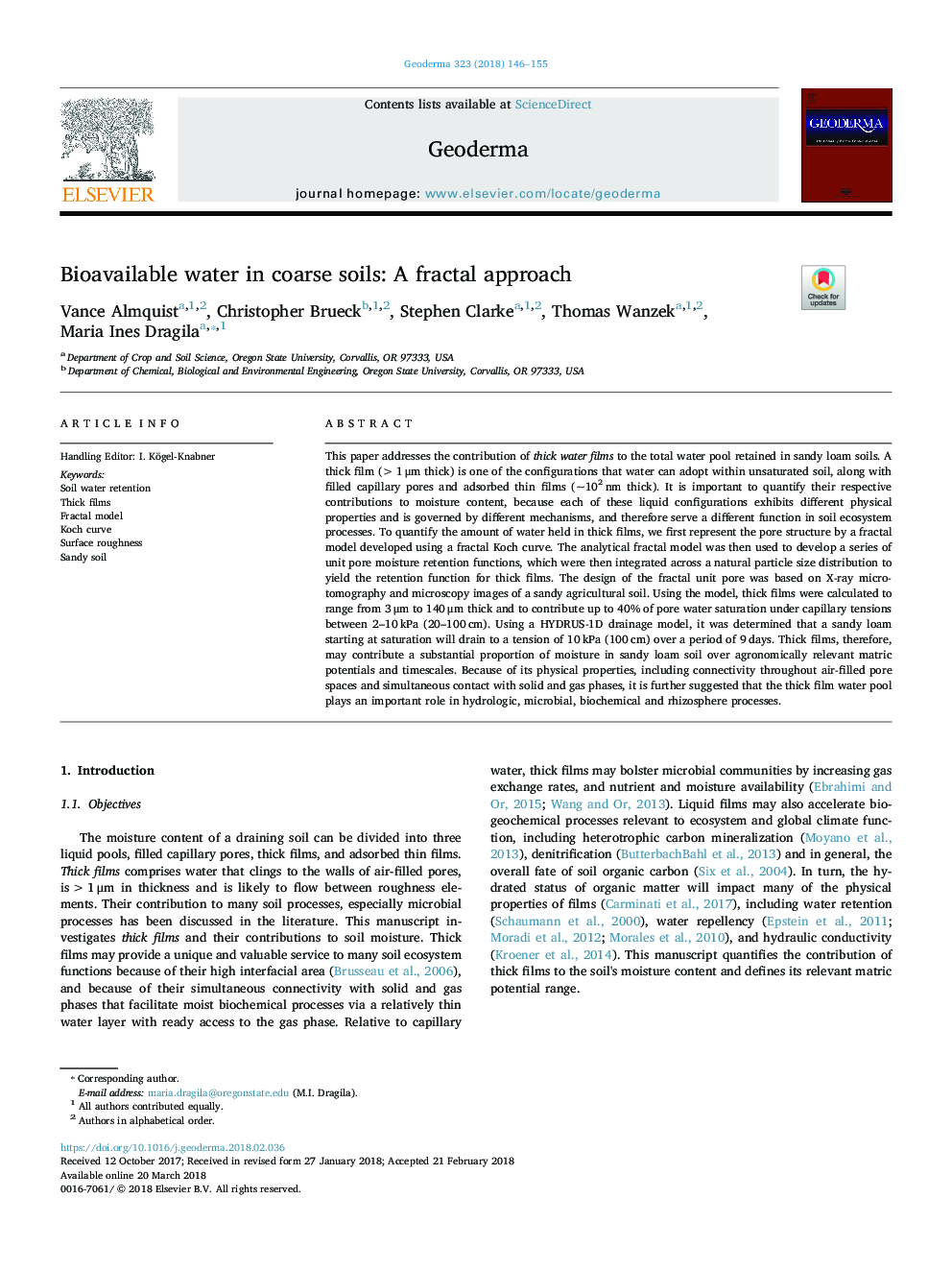| Article ID | Journal | Published Year | Pages | File Type |
|---|---|---|---|---|
| 8894057 | Geoderma | 2018 | 10 Pages |
Abstract
This paper addresses the contribution of thick water films to the total water pool retained in sandy loam soils. A thick film (>1â¯Î¼m thick) is one of the configurations that water can adopt within unsaturated soil, along with filled capillary pores and adsorbed thin films (~102â¯nm thick). It is important to quantify their respective contributions to moisture content, because each of these liquid configurations exhibits different physical properties and is governed by different mechanisms, and therefore serve a different function in soil ecosystem processes. To quantify the amount of water held in thick films, we first represent the pore structure by a fractal model developed using a fractal Koch curve. The analytical fractal model was then used to develop a series of unit pore moisture retention functions, which were then integrated across a natural particle size distribution to yield the retention function for thick films. The design of the fractal unit pore was based on X-ray microtomography and microscopy images of a sandy agricultural soil. Using the model, thick films were calculated to range from 3â¯Î¼m to 140â¯Î¼m thick and to contribute up to 40% of pore water saturation under capillary tensions between 2-10â¯kPa (20-100â¯cm). Using a HYDRUS-1D drainage model, it was determined that a sandy loam starting at saturation will drain to a tension of 10â¯kPa (100â¯cm) over a period of 9â¯days. Thick films, therefore, may contribute a substantial proportion of moisture in sandy loam soil over agronomically relevant matric potentials and timescales. Because of its physical properties, including connectivity throughout air-filled pore spaces and simultaneous contact with solid and gas phases, it is further suggested that the thick film water pool plays an important role in hydrologic, microbial, biochemical and rhizosphere processes.
Related Topics
Physical Sciences and Engineering
Earth and Planetary Sciences
Earth-Surface Processes
Authors
Vance Almquist, Christopher Brueck, Stephen Clarke, Thomas Wanzek, Maria Ines Dragila,
